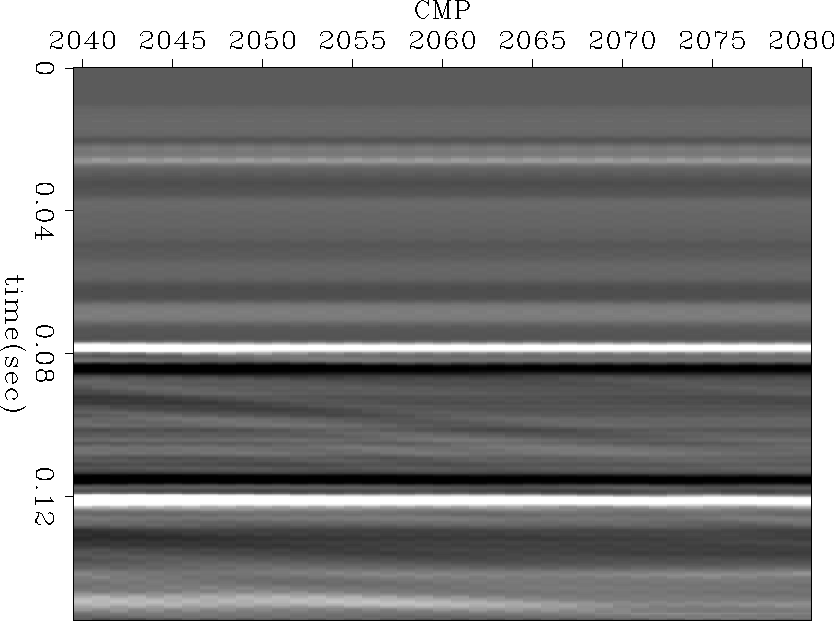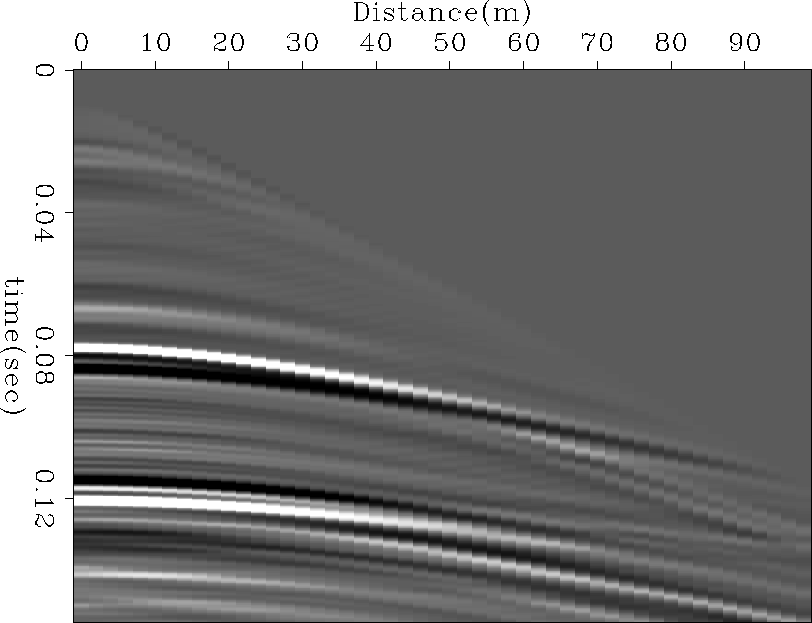 |
Figure 18 Zero-offset section for gas filled pore space.
This is the section produced by using the Gassman's relations to substitute oil for brine. The big difference is the fact that the interfaces at the top and bottom of our sand are very distinguishable. The reason is that the impedance contrast is much greater because the P-wave velocity decreases with the substitution of oil since the Bulk modulus of oil is about 1/4 that of brine. Figure 16 shows the section. It is clear that the data does not change above the sand body, but at the contact and later, the arrivals are changed. Figure 17 shows the CMP gather from the midpoint at 2100 meters. There is good indication of a shear-wave arrival on the CMP gather for both the top and bottom reflection. Also, there is what appears to be a head-wave arrival from a refraction at the base of our sand.
The greater offsets for the oil section have much higher amplitude than for the brine section, however there is not an appreciable increase in AVO which is often expected with hydrocarbon indication Mavko and Mukerji (1998). Referring to equation (9), there still is not enough of a change in Poisson's ratio to yield an increase in amplitude with offset. Rather, the amplitude stays about the same magnitude, or decreases a little with increasing offset.
 |
|
gas_cmp
Figure 19 CMP from gas section at midpoint 2100m. |  |